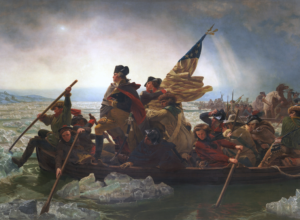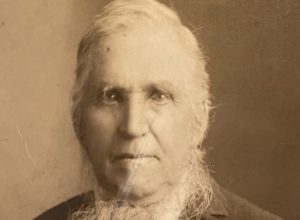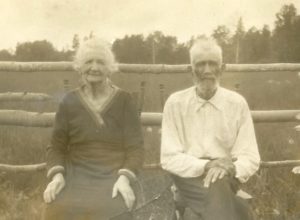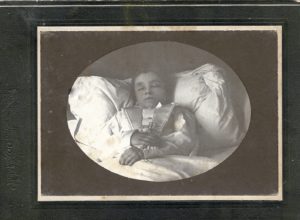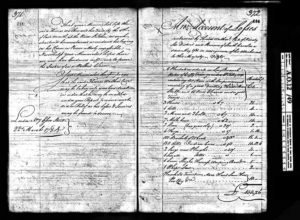
Passion For Genealogy is reader supported. When you use and buy through links on this site, we may earn an affiliate commission.
I absolutely love genealogy research! This article shares my family search and finding my relative, “The Quiet Hero.”
Table of Contents
My Family Search Begins
It began with a letter. A letter dated October 19, 1969, written by my great uncle, Tom Callahan to his nephew, Ed Callahan. It read, “My grandfather, Timothy Collins (my mother’s father) was born in Knock, County Clare, Ireland, along the river Shannon. He came to America about 1843. He enlisted in the United States army and was wounded in a battle near Mexico City in the Mexican War of 1846. He was given a grant of 320 acres of land.”
The letter was very short, to the point – it read like a short obituary, or just the introduction of one. Yet, it was golden to me, as a genealogist, to have a handwritten letter filled with details of an ancestor’s life that sometimes could take a lifetime to figure out. (We’ve all been there trying to figure out the place of birth for a great, great, great aunt. It’s a pleasurable, addicting goose chase.) Still, I wanted more. As I read the letter I came to realize how little I knew about the Mexican War and why it was fought. I don’t recall history classes touching much on the subject or how really important the outcome of war was to our country. Just knowing that my great, great grandfather came from Ireland, fought and was wounded in battle was something that needed further research.
Coming to America

Timothy Collins was born between the years of 1817-1822, in the small village of Knock, County Clare, Ireland. His parents and siblings are still unknown. The 1900 U.S. Census lists Timothy’s emigration year as 1845. That year was the beginning of the worse famine in Ireland’s history. According to the author, Cecil Woodham-Smith who published his classic study, “The Great Hunger,” the potato blight was discovered on the Isle of Wright in July of 1845. By September, all of the tubers were destroyed and laid rotten in the ground. During this period, the staple of the Irish people’s diet was exclusively potatoes. Hunting and fishing were not a consideration as the equipment and land were not at their disposal. The grain grown in Ireland was marketed to England or for paying rent. As crops failed and starvation crept in many people turned to emigration as a way of survival.
In 1845, the United States was contemplating the “manifest destiny” proposal brought to the table by President James K. Polk. Polk’s thought was to expand the size of the United States from coast to coast by either purchasing or conquering new territories. He was a firm believer in the theory that the U.S. had a God giving right to conquer and civilize the entire continent. Since the majority of U.S. citizens supported this belief many American’s traveled and settled westward. As the annexation of Texas helped win Polk’s election in 1844, his desire to claim other territories grew. When he offered to purchase the western lands and was rejected, his rebuttal was to station troops along the Rio Grande and Nueces River. In retaliation, Mexico sent its soldiers to the other sides of both rivers. War now seemed to be inevitable.
My Family Search Heads South
When Collins arrived in the U.S. in 1845, he discovered that Congress was calling for volunteers in anticipation with a fight against Mexico. For many young men this was a call for new adventure and glory. The United States government was offering bounty land in the amount of 160 acres per soldier as an incentive or award, for joining the military. For Collins this was his chance to acquire his own land and money. Something he never had the opportunity to do in Ireland. Like many other Irish emigrates, he was weary of the historical brutality and absentee landlords, which continued to plague their nation. Here was his chance to begin a new life.
On the 2nd day of July 1845, he enlisted in Company B, in the Eighth Regiment of the Infantry. The U.S. Army, Register of Enlistments, 1798-1914 is a record search site through Ancestry.com. This site contains many military enlistment records for the years of 1798-1914. I was able to find the following information regarding Timothy Collins; physical appearance, age, place of birth, occupation, place and date of enlistment, who enlisted him, company and regiment, mustered out date, cause of discharge, and any additional remarks. According to the record he was 23 years old, a laborer, 5’5’ tall, hazel eyes, born in Clare, Ireland, enlisted in Syracuse with a Lt. Simmons, and was honorably discharged on 14 Feb 1848 in Mexico City.
That told me quite a bit about my great, great grandfather, but I wanted to know more. What did he do in the service? Did he fight in any battles? Did he ever receive the land he most desperately wanted? I knew from history that the Mexican War had been won by the United States, but what part did he play.
After searching the National Archives and Records Administration website, I was able to locate the correct application forms to apply for pension and bounty land records pertaining to an individual. After nearly a month, I received a letter from the Archives informing me that “the war department did not create military service records for Regular Army soldiers in the 19th century, and thus, we will not have a military service record for Collins.” Although, dismayed to hear this news, I was very much surprised to receive an in-depth report of Timothy’s war record through his pension application.
According to his pension testimony, on the 29th day of March, 1887, Collins personally appeared as a pension applicant in Washington, D.C. The information provided on the form is handwritten with Timothy Collins signature signing the declaration as the truth. He personally relays his account of the war and the battles in which he served. He recalls serving under both Captain Reeves and Colonel Belknap throughout the battles of Palo Alto, Resaca de la Palma, Vera Cruz, Churubusco, Cerro Gordo and Molino Del Rey. The report further states, “(Collins) was disabled by reason of gunshot wounds of left knee and in the neck.
Disability was not incurred while in any manner voluntarily engaged in aiding or abetting the late rebellion against the authority of the United States; but that said disability was incurred at Molina Del Rey, Mexico. On or about the 8th or 9th day of September A.D. 1847, in the manner as follows: was discharged from hospital in the City of Mexico for disability resulting from the above wound on February 14th 1848.”
The early dawn of the 8th of September 1848 brought one of the bloodiest battles of the war. Two miles outside of Mexico City the fortress of Chapultepec secretly prepared for battle. All eyes were centered on Molina Del Rey which was positioned just down the hill from the castle. General Winifred Scott strongly believed that Molina Del Rey contained a cannon foundry and ammunition magazine. His scout’s relayed information that a significant supply of arms had been stocked piled and a large group of Mexican soldiers were drifting about the village. With this is mind, Scott believed that he needed to shell the enemy artillery and take over the buildings. He related his plan to General Worth who in turn chose the 8th Infantry to apply the military strategy of creating human assault columns.
The men of the 8th Infantry formed the deadly columns and marched toward the castle. Although, the Mexican army was somewhat surprised at the early attack, they quickly began to fight back. The enemy stationed in the castle waited until the troops came within musket range. The Mexicans fired down on the men killing and wounding hundreds. Other attack columns followed to help their fallen comrades and to fight back the enemy. As the Mexican soldiers scaled down the castle walls, U.S. troops used their guns and bayonets. After only two hours of battle the Mexican troops ran in defeat. The U.S had won the battle but a high cost. In such a short time over 800 men had been killed or wounded.
Putting a Stake in the Ground
The pension report which I received was considerable in size with numerous pages of further evaluations of the applicant’s health, his request for pension increases, and a death record. In addition, to these records the Bounty Land records sent to me included his discharge papers and the warrant for his 160 acres which he earned for his services.
Collins received his prized bounty land. The NARA provided invaluable information by sending me copies of the land warrant and correspondence pertaining to his claim to the property. Although the warrant did not provide details as the whereabouts of the property, it did include the property warrant number.
I was then able to go to the website for the U.S. Bureau of Land Management. Searching first under “Documents by Type,” I entered his warranty number in the “Document #” box. This pulled up a list of names sharing the same warranty number. I quickly found Collins’s name and property area. The site also included a map indicating the exact spot of the acreage. Although, I knew where Collins had settled in Michigan, it wasn’t until I began my research of his military history as to what he went through to obtain his land. (One interesting fact I learned was that he was in a hospital for five months due to his injuries, and luckily survived.)
Collins received those long-desired acres in the swampy wilderness of western Michigan. He cleared his land and grew crops using more progressive methods than other farmers in the area. He eventually married and had a family of four girls. In 1907, Timothy passed away at the Old Soldier’s Home in Washington, D.C. surrounded by other veterans just like him.
The Rev. John Whalen McGee in his book, “The Passing of the Gael,” states, “Emigration is the great watershed in every family history.” The story of Timothy Collins is my family’s watershed moment. Because of him and other emigrates that followed in my family, I am here. No family should ever let the remembrance of how, why, when, or where our ancestors vanish, not only because of the lessons we learn, but also because of our general desire as humans to remember.
We as historian descendants—are obligated to carry forth their stories for future generations. And I’m profoundly grateful to be given this privilege by Timothy.
My Family Search Continues
I hope you enjoyed reading, as much as I loved sharing my family search! Here are a few other family genealogy stories you may want to check out:
Rebel with a Cause – Family Research
